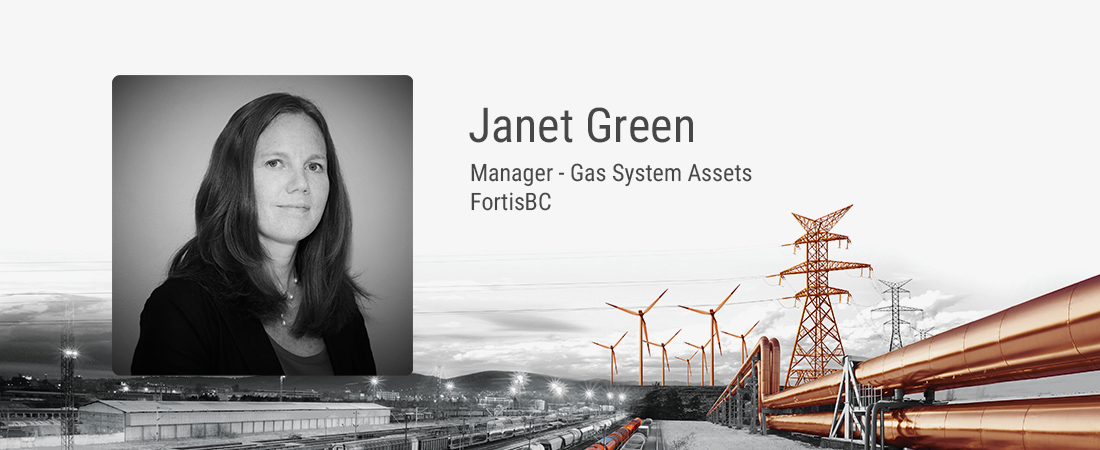Asset Management Is For Women Too (featuring Janet Green)
One thing I have been noticing more and more is the number of women entering the field of Asset Investment Planning & Management (AIPM). In fact, many of Copperleaf’s clients are women who are taking a leading role in their organizations in planning and managing their asset investments more strategically, to minimize risk and create the highest value for their organizations.
Certainly the prevalence of women is not evident by attending an asset management conference…yet. But it occurred to me that this is a great role for women in a field where you might not expect to find many women! And I believe this is the beginning of an exciting trend and would like to highlight some of these women—and the interesting work they’re doing—to establish some role models and shine a light on this as a possible career path for young women.
In this article, we are featuring:

How did you get involved in the field of asset management?
I started my career at FortisBC (at that time it was Terasen Gas) in the System Integrity group, where our focus was ensuring the long term safety and operation of our transmission pipelines. We would recommend maintenance, inspections, or capital investments that would extend the life of those assets. This was really my first introduction to the concepts of asset management. After a few years in that role, I was looking for a change when a position in our Asset Management department came up. I took on the role of managing the maintenance planning group for our gas assets. It was in this role that I truly embraced and applied the principles of PAS55. Since then I’ve had the opportunity to grow and expand my responsibility in the group and to continue to develop our asset management maturity.
What attracted you to this field?
What first attracted me to asset management was the multidisciplinary nature of the work. In an asset-intensive organization like a utility the principles of asset management are so integral to the success of the organization that we get involved in many aspects of the business: operations, engineering, finance, regulatory, etc. It’s a great way to learn about how the company operates. Asset management also provided an opportunity to leverage my technical engineering background while giving me some exposure to a wide variety of the business functions within the organization.
What excites you most about this field?
What excites me most is seeing the principles of asset management gain traction, not only in the utility industry, but in other industries as well. Although every business and every industry has a slightly different approach, the importance of asset management practices and the life-cycle approach to managing assets has gained a lot of acceptance in recent years. Formalized asset management functions are becoming prevalent in many industries. As more and more companies and industries develop their asset management best practices, the opportunities to learn from one another grows exponentially. I’m looking forward to seeing what the next ten to twenty years in asset management will look like.
What are the most rewarding aspects of the work you do?
It’s being able to see the big picture and contribute to company performance. To make informed decisions our whole team has to understand what the company priorities are so we can develop our asset management strategies to support those priorities. There are a lot of moving parts, but the challenge is what makes it such a rewarding field to work in.
Where are you (and your team) making the biggest impact?
We’re currently making the biggest impact by working cooperatively with operations to improve our short and long-term planning of maintenance and capital activities. Not only are we ensuring that our activities are being prioritized to add the greatest value, but we’re also working with operations to make sure that those activities are planned in such a way that we can achieve the greatest efficiency of resources.
What do you think are the biggest challenges?
Working with different groups throughout the organization is one of the most rewarding aspects of asset management, but can also be the most challenging. Almost any initiative that we’re pursuing in Asset Management touches at least one, if not several, other groups in the organization. There are always competing interests and priorities in the groups that we’re working with. Finding ways help address those priorities while still advancing asset management principles can be a hard line to walk. It becomes very important to have strong working relationships with others in the company to help arrive at a solution that works for all.
Would you recommend asset management to other women as a career?
Absolutely. Asset management is the perfect way to combine your technical knowledge and business acumen. Because it covers such a broad skill set, individuals from a wide variety of educational backgrounds and with a wide variety of skill sets can find a rewarding career in asset management.
To learn more about other women making an impact in this emerging field, feel free to check out the rest in this series here.

